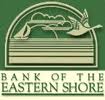 Maryland state regulators closed the Bank of the Eastern Shore, Cambridge, MD and the FDIC was appointed as receiver. As has happened on previous occasions, the FDIC was unable to find a buyer for the failed bank, leaving uninsured depositors at risk of loss on their savings.
Maryland state regulators closed the Bank of the Eastern Shore, Cambridge, MD and the FDIC was appointed as receiver. As has happened on previous occasions, the FDIC was unable to find a buyer for the failed bank, leaving uninsured depositors at risk of loss on their savings.
To protect insured depositors and wind down the operations of failed Bank of the Eastern Shore, the FDIC set up the Deposit Insurance National Bank of Eastern Shore (DINB) which will remain open until May 25, 2012. Only insured deposits of Bank of the Eastern Shore were transferred to the DINB. Depositors with insured savings will have until May 25th to transfer their accounts to a new institution. The FDIC will mail checks directly to depositors with certificates of deposit and individual retirement accounts.
The FDIC currently insures deposits up to a limit of $250,000. The FDIC will review all interest bearing accounts with balances in excess of $250,000 to determine if they are covered by deposit insurance. Depositors with account balances over the deposit insurance limit of $250,000 should call the FDIC Call Center at 1-800-591-2817 to obtain a claims form for uninsured deposits. Any depositor who winds up having uninsured money at the Bank of the Eastern Shore will receive a Receiver Certificate from the FDIC which entitles the holder to claim, at some future time, a proportionate share of the funds recovered from the disposal of the failed Bank’s assets.
The FDIC was unable to determine the amount of uninsured deposits at the time of the Bank of the Eastern Shore’s closing. Depositors can assess their situation regarding possible losses on uninsured deposits by reviewing the FDIC’s web page “Is My Account Fully Insured?“.
A large number of banks remain in weak financial condition four years after the banking crisis started in 2008. The FDIC Problem Bank List at December 31, 2011 totaled 813 banks or over 11% of all FDIC insured institutions. Depositors need to be proactive in assessing the financial condition of the bank they keep their money at to avoid the horrendous situation of possibly losing part of their savings.
Alert depositors may have noticed that the Bank of the Eastern Shore received a Prompt Corrective Action (PCA) notice from the Federal Reserve in April 2011. A PCA notice is usually issued when a bank is in dire financial condition and a strong message to depositors that they should move their money into a safer bank.
Ironically, some depositors with savings in excess of $250,000 will not lose a dime. The Dodd-Frank Act provides for unlimited deposit insurance (through December 31, 2012) on non-interest bearing transaction accounts, regardless of account balance or type of ownership. With the U.S. financial system still in fragile condition and the European banking system careening towards a full blown crisis, large depositors have been flooding U.S. banks with money that has been placed in non-interest bearing accounts (see $1.2 Trillion of Nervous Money Floods Into U.S. Banking System).
Large depositors who are nervous about the financial condition of their bank should consider opening multiple accounts at different banks to have full FDIC insurance coverage or consider putting their money into non-interest bearing transaction accounts, especially after considering the fact that the amount of interest paid by banks on short term savings accounts is almost at zero.
All branches and the main office of Bank of the Eastern Shore will reopen on Monday, April 30, 2012. Customers can continue to use checks, ATMs and debit cards until May 14th.
At December 31, 2011, the Bank of the Eastern Shore had total assets of $166.7 million and total deposits of $154.5 million. Bank of the Easter Shore had been in business since 1986 and was a locally owned and operated state chartered bank.
The FDIC will retain all of the assets of failed Bank of the Eastern Shore for later disposition. These junk assets are classified by the FDIC as “resolution receivables” and the pile of junk loans at the FDIC has become immense. At December 31, 2011, the FDIC was holding $28.5 billion of “resolution receivables” – junk assets from failed banks that they have not been able to dispose of (see The FDIC Has A $30 Billion Junk Loan Problem).
The cost to the FDIC fund for the failure of Bank of the Eastern Shore is $41.8 million. Eastern Shore is the nation’s 18th banking failure of the year and the first in Maryland since November 2010.

Speak Your Mind
You must be logged in to post a comment.